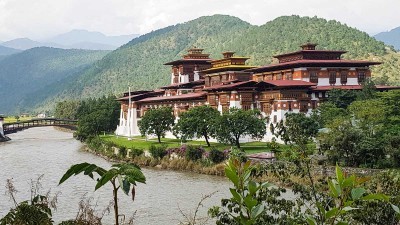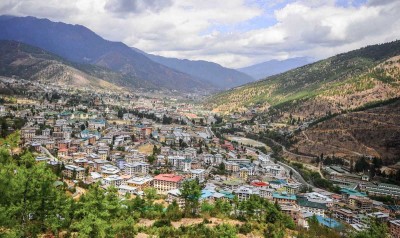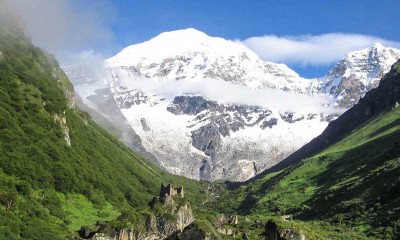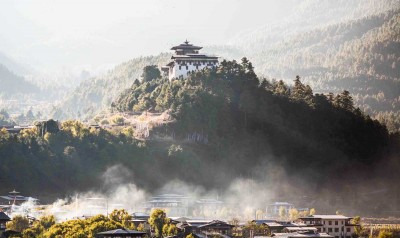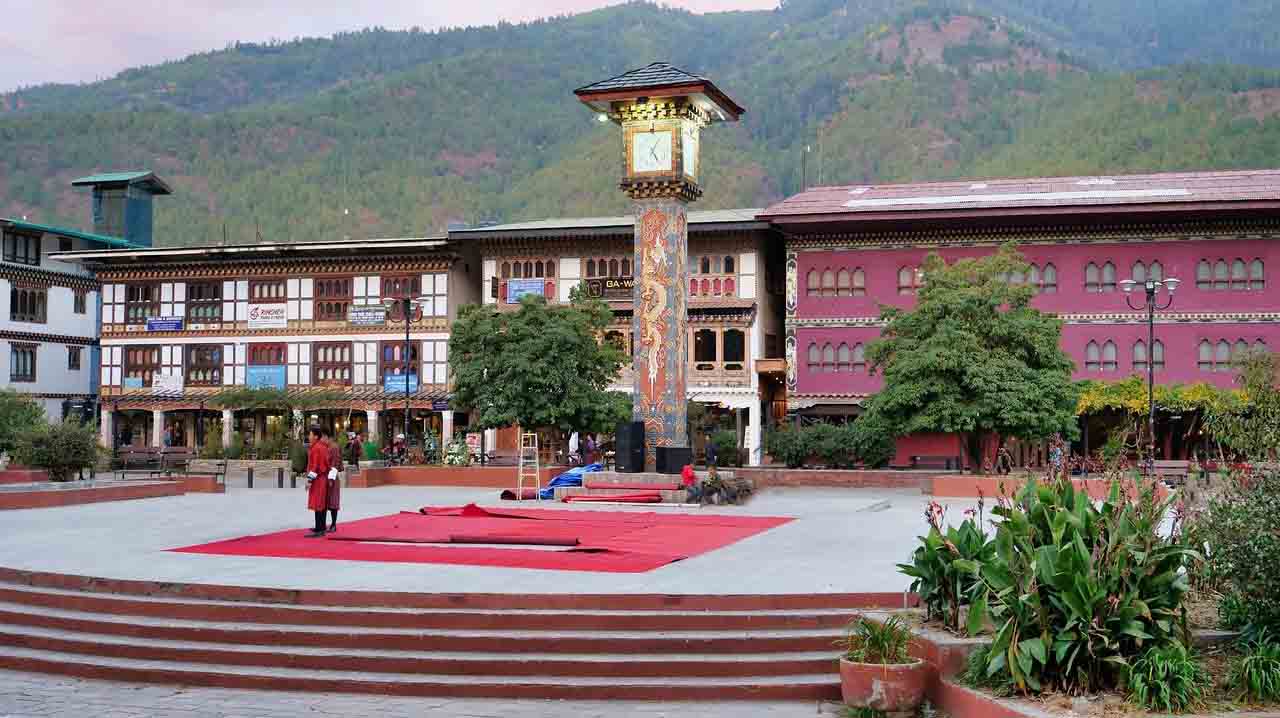
- 03/31/2022
- Tags: Places to Visit in Bhutan
- Himalayan Wander Walkers
Must visit Places in Bhutan
Bhutan is the last Shangri La in this world where you will truly find breathtaking natural beauties and welcoming cultural festivities. Though Bhutan is a very small nation in Asia, it has a lot to offer its visitors from all over the world. From the overland tour to trekking in the Himalayas can be experienced from Bhutan.
There are many good places to visit in Bhutan. In this blog, we have listed the top 12 must-visit places in Bhutan. Please go through the detail provided below.
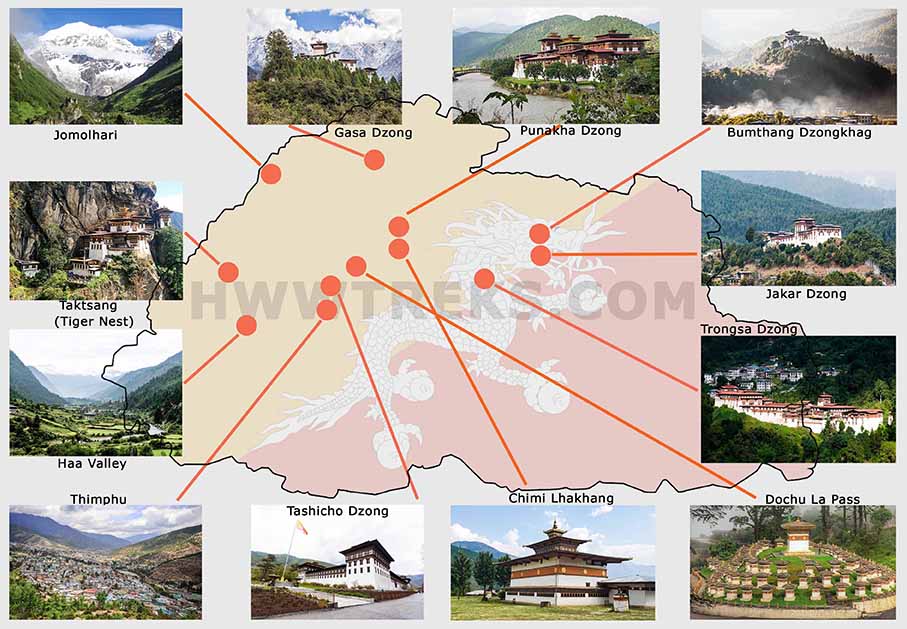
Planning trip to Bhutan and need help?
Tell us about your trip to Bhutan and what you expect from it. We will answer your questions in 24 hours and help you design a trip with a comfortable itinerary to best meet your needs.
Contents [show]
Taktsang in Paro – Tiger Nest
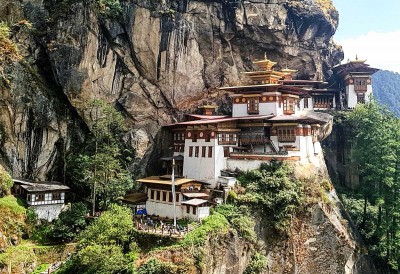
Taktsang or Tiger Nest is the most popular site in Bhutan. It is built on the edge of the Mountain at an elevation of 3000 meters from the sea level and located on Paro. It is believed that the Guru Rinpoche (tantric master) has meditated there and established the Taktsang monastery in the 8th century. This sacred place is one of the popular Buddhist pilgrimage sites in Bhutan. Many tourists hike to Taktsang which takes approximately 5 hours to and fro. From the Taktsang monastery, one can view the majesty landscape including the Rocky Mountains and the lush subtropical forest through which the hikers experience nature. Those who find difficulty walking up the mountain will get horse services which cost about United States dollar 25.
Tashicho Dzong - Fortress of the glorious religion

Tashicho Dzong is one of the most beautiful touristic places in Bhutan. This fortress is located at the end of the main town with a distance of 2 kilometers away from the heart of the Thimphu called Chhagchhen Lam. It is very delightful to watch as it is built just on the western bank of Wang Chu River. Tashicho Dzong is the largest landmark in Thimphu where it holds the royal Bhutanese Government offices. Though it is built in 1641 later the third King of Bhutan rebuilt it in 1952. The visitors shouldn’t miss the changing flags at 5 pm where it begins in the courtyard and finishes outside in the front. This is also well known for the summer residence of the monks. Every year Tshechu festival is happily celebrated in TashiCho Dzong where the monks dance with Religious masks on their faces. This festival lasts for four days.
Punakha Dzong – Second-Largest Dzong in Bhutan
Never miss this Dzong from your itinerary of Bhutan Tour if you are a lover of art and culture. Punakha Dzong is the second largest one where you will find the brilliant structure of the fortress situated at an elevation of 1200 meters from the sea level. The Punakha Dzong is constructed within a year and no single nail is used for its construction. First Bhutan’s national assembly was held in this popular place in 1953. This is a place where the current Bhutanese King Jigme Khesar Namgyel Wangchuck got married to Queen Jetsun Pema in 2011. Punakha belongs to the winter capital of Bhutan and the head of the spirituality spend his winter in Punakha Dzong.
Thimphu – The Capital of Bhutan
The capital of Bhutan, Thimphu is a small city where you will find the juxtaposition of modern and ancient tradition making it an ideal location. The town is the only facilitated with a modern abundance of accommodations, restaurants, cafes, and shopping centers among all the towns of Bhutan. All the official administrations and bureau are located in this particular area. It’s really hard to find ATM machines in other towns except for Thimphu. So, for international tourists, Thimphu is a perfect location for your stay while visiting the popular attractions like Tashicho Dzong, Chari Monastery, Buddha Dordenma, clock Tower Square, National Memorial Chorten, Centenary Farmer's Market, Semtokha Dzong, etc. The experience that you get from Thimphu reflects the entire culture, lifestyle, and religious practices of Bhutan.
Dochu La Pass – The most amazing Mountain Viewpoint

Dochu is situated at an elevation of 3100 meters on the East-West highway which is about 50 minutes from Thimphu. Even though Dochu La is not the highest pass in Bhutan it is worth visiting. La reflects the story of spirituality, bravery, and Bhutanese culture. The pass is marked with the colorful Tibetan praying flags, memorial 108 stupas built to honor the Bhutanese soldiers who lose their lives in the 2003 war with Indian rebels. After the victory over Indian rebels, Druk Wangyal Lhakhang (Temple) was built there. The name Wangyal meaning to Victory. The Himalayan vistas of more than 7000 meters mountains like Gangkar Puensum, Masaganang (7,200m), Kangphugang (7,170m), Tsendagang (6,960 m), Jejegangphugang (7,158m), and Terigang (7,060 m), etc.
Jomolhari –Best trekking destination in Bhutan
If you are seeking an adventure trip in Bhutan then trekking to Jomolhari or Chomolhari is a perfect choice, one of the best places to visit in Bhutan. Chomolhari is well known for its trekking destination where the trekkers pass over the 5000 meters height and this trek can be done with a minimum of 7 days to a maximum of 15 days. Your thirst for adventure will be treated by the snow-capped mountains, beautiful glacial lakes, and wonderful views of the landscapes. In this trek, you will experience the untouched remote areas of Bhutan where you will discover the traditional lifestyle of Bhutanese, old monasteries, and small villages in Haa valley. The entire Haa valley is worth trekking and hike. Although autumn is a peak season in Bhutan we (HWW) suggest you travel from late March to June to explore the Jomolhari trek.
Chimi Lhakhang – Only a fertility temple in Bhutan
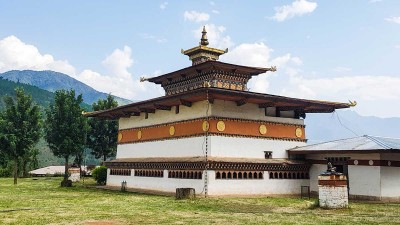
Chimi Lhakhang is a sacred site that is also known as the Fertility Temple. This temple was built in 1499 by Ngawang Chogyel (4th hierarch of Drukpa) in honor of Divine Madman (Drukpa Kunley) who get rid of demons in Dochu la by using the Thunderbolt of Wisdom. When the Drukpa Kunley noticed the dead of Demon in form of a dog. He said Chi Mi which means No Dog in English. In this way, the name of the temple was given as Chimi Lhakhang. He is also the first Lama who introduces Buddhism in Bhutan. This temple or Lhakhang is an especially important destination for visitors who are unable to fall pregnant and childless couples. It is believed that praying and circumambulating the temple by carrying the wooden phallus three times will be blessed by the fertility father “Drukpa Kunley”. Inside the temple, there are many photos left by visitors who gave to birth a child after visiting this temple. So, Chimi temple is one of the best places to see on your Bhutan Tour.
Trongsa Dzong – The origin of the Wangchuk Dynasty

Trongsa Dzong is the largest fortress among all Dzongs of Bhutan situated on the ridge of a hill that dominates the entire town. This place is the origin of the Wangchuk Dynasty. At first, it was just a temple built by Drukpa lama, Nagi Wangchuk son of Ngawang Chhojey in 1543. Later on, it was rebuilt and replaced as Chokhor Rabtentse Dzong in 1647. During the 18th century, the Dzong has enlarged several times. This place reflects the significance of Trongsa and the history of Kings of the Wangchuk dynasty. In Trongsa, there is an impressive watchtower museum where the visitors can learn about the history of the kingdom by exploring the Bhutanese artifacts and religious treasures that are kept in this museum. Every year Trongsa Tsechu is celebrated for five days here at the courtyard.
Bumthang Dzongkhag – Religious heartland of Bhutan
Bumthang Dzongkhag is one of the 20 districts of Bhutan which is located in the Northern Central region of the Kingdom consisting of four major valleys namely Ura, Chumey, Tang, and Choekhor. The name Bumthang origin from the words Bumpa (vessel of holy water) and thang (flat or field). This Dzongkhag/district is also home to Buddhist venerated monasteries and temples like Kurjey Lhakhang, Jakar Dzong, Jambay Lhakhang, Tamzhing Monastery, and Padtshaling Gonpa linked with the Tantric Master, Guru Rinpoche. Jambay Lhakhang (Temple) is the oldest temple linked with the history of Tibetan Dharma King, Songtsen Gampo from the 6th century. Bumthang is also popular for agricultural products in Bhutan because of its fertile land for farming. The precious religious sites bless the Bumthang valley with fields covered with buckwheat, rice, potato, and apple orchards. Even dairy products are exported to Thimphu, Paro, and other markets in India. It is one of the most beautiful and sacred valleys in Bhutan.
Gasa Dzong – Popular Hot Spring of Bhutan
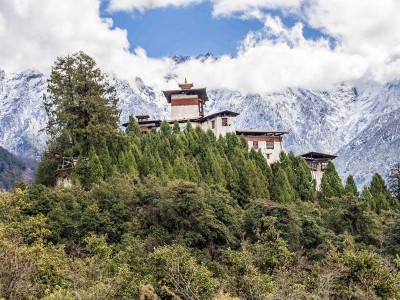
Gasa Dzong or Gasa district lies on the far north sharing its border to Tibet Autonomous Region. Even though Gasa is one of the most remote parts of Bhutan it has become a tourist destination because of its pristine forests, magnificent mountains, and the exceptionally beautiful location of its Dzong. The number of tourists visiting Gasa is increasing every year. The popular Jigme National Park and Gasa Tshachu play a significant role in tourism here. After your adventure journey of hiking and trekking in the national, Gasa hot spring will help to rejuvenate your health both mentally and physically. Every year during the 29th day of the 10th Bhutanese month, the celebration of offering to the deities of Gasa (Mahakala) by gun salutation can be observed closely. Many travelers don’t miss their trip to Gasa Tshachu (Hot Spring).
Haa Valley – Explore Rural Bhutan
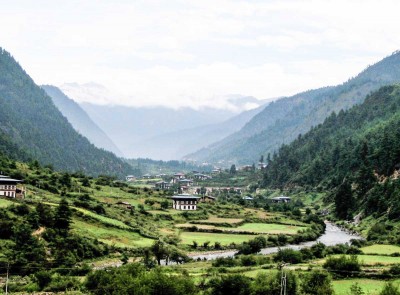
Haa valley lies in the western Haa district bordering Sikkim. Since 2002 this valley is opened for foreigners and became the best destination for discerning visitors who want to experience the untouched hidden valley of Bhutan. This valley is blessed by the three major Buddhist protectors Manjushree (Jampeyang), Avalokeshwor (Chenresig), and Vajrapani (Chagna Dorjee) to protect all the gods, semi-god and human beings. The Black and White temples are popular sites to visit in Haa valley. The temples are built next to the Miri Punsum. Miri Punsum meaning to three brothers who have given name to a three ridges hill. There is a mystical history of Haa. The majority of the tourists get a glimpse of Haa from the Chele la. This valley is perfect for hikers and off the road cyclists who seek remote and untouched places. The Haa Tsechu festival is celebrated here in the summer, villages turn into a festive atmosphere by offering colorful praying flags in monasteries and high hills.
Jakar Dzong - Castle of the White Bird
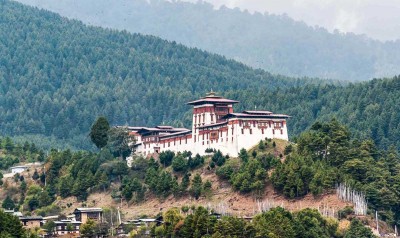
The name Jakar is derived from the words “Ja” and “Kar” which directly translate the meaning of bird and white respectively. This fortress is built on the ridge of Jakar village which is the most significant place of Chamkgar valley in the eastern Bumthang Dzongkhag. It is built in 1549 by Lam Nagi Wangchuk who introduces the teachings of Drukpa Kagyupa in Bhutan and became the seats to the first King of Bhutan. The structures of this fortress are similar to other Dzongs except for the distinct central tower which is fifty meters high. Alter on the Jakar Dzong name was renamed as Jakar Thobgyal after the victory over the Tibetan army in 1679. Again during the 3rd Desi of Dzong, Minjur Tempa won the battle with the support of additional forces under Lam Ngawang Rabten. In memory of this victory, the Dzong was renamed Jakar Yugyal Dzong meaning to Fortress of the white bird.
